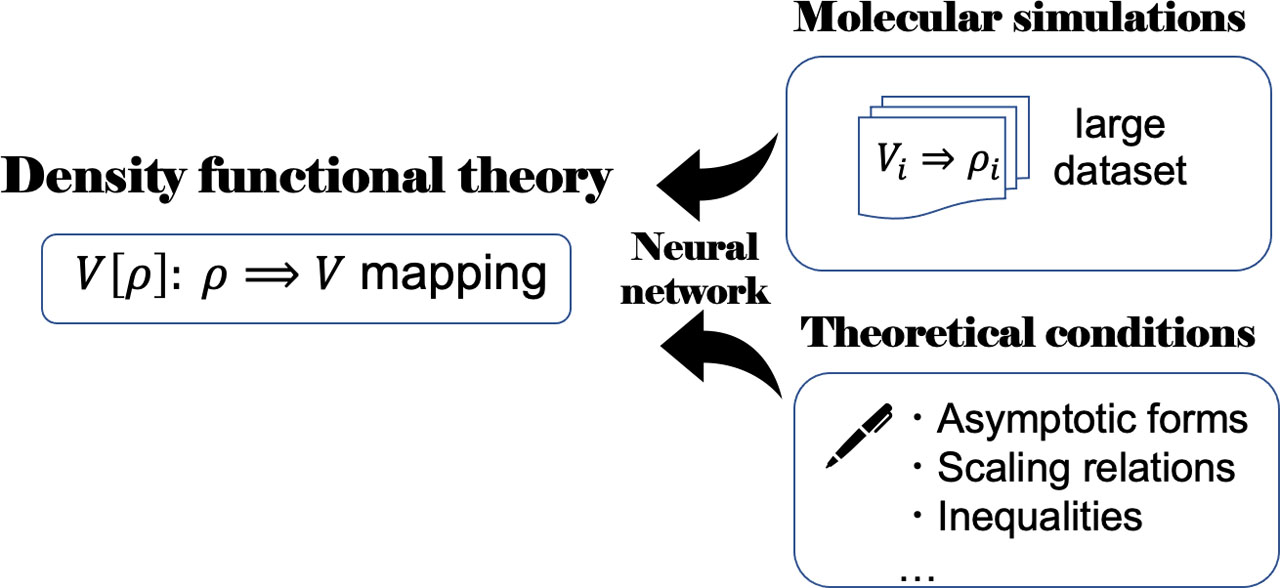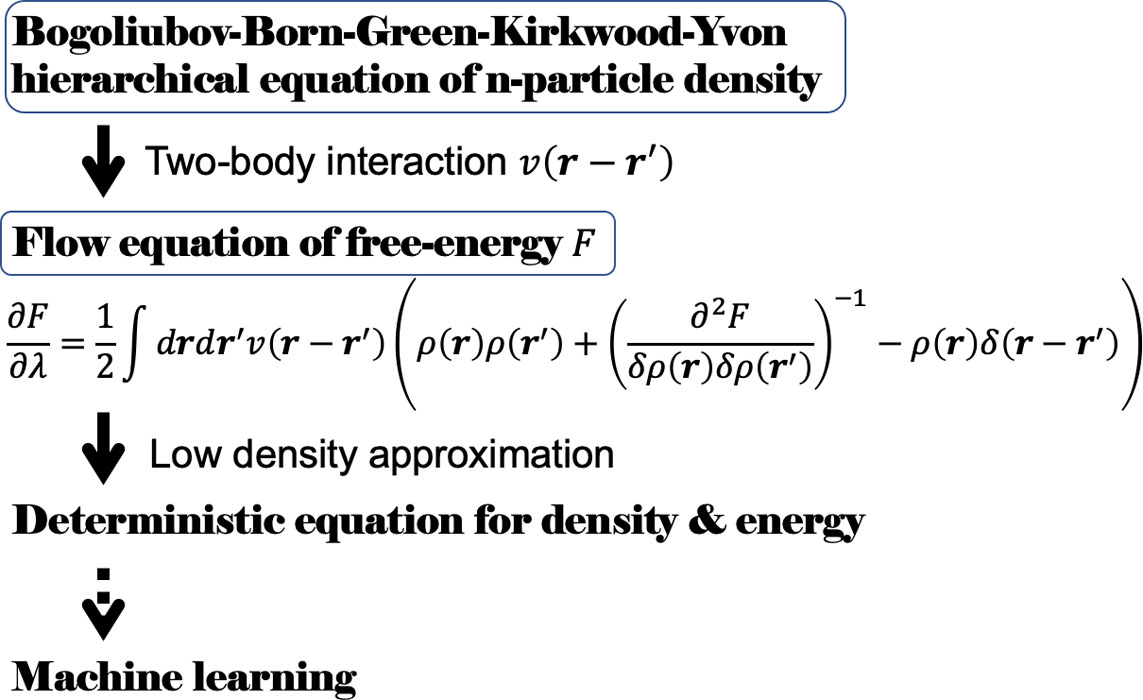Development of Accurate Density Functional Theory
Sugino Group
Significance of the density functional theory (DFT) is in the ability to obtain the particle density ρ and the energy E without knowing the many-body wave function or the Green’s function. Establishing the ρ-to-E mapping (or the functional E[ρ]), or equivalently the mapping to the external potential (Vext[ρ]), is a grand challenge of computational materials science. This can be done, in principle, by inverting the Vext-to-ρ relations that are provided by performing extremely-high-precision simulations; but there was no such trial until very recently. Such machine-learning (ML) based approach may be enabled by overcoming problems associated with handling very large dataset. With this in mind, we have previously done accurate quantum chemical simulations of a few molecules and the resulting density-to-energy relation was modeled with the neural network technique. The functional thus developed was found to improve the accuracy of molecular calculations showing a promise of achieving the chemical accuracy with DFT; however, application to solids was hampered by the fact that the molecular ρ is qualitatively different from the solid-state ρ and the non-availability of accurate ρ for solid states. In this context, we have shown that the insufficient information contained the molecular ρ can be augmented by adding the theoretically established ρ-to-E relations that hold for general ρ. To demonstrate this, we have reconstructed the functional using the theoretical relations as constraints of ML. The functional was developed using a semilocal functional format, called meta-generalized-gradient-approximation (meta-GGA), where the density, gradient of the density, and the kinetic energy density are used as the descriptor. By applying thus-established functional (Vext[ρ]) to various crystalline solids, we have shown improved predictability of the lattice parameters. The functional was made public for the benefit of supercomputer uses [1].
Further improvement in the accuracy is most likely to be brought by using more sophisticated descriptors, such as the weighted densities. To get insights into it, classical systems provide a suitable benchmark because of the simple structure as compared to quantum systems. In this context, we investigated the structure of classical fluids of Lennard-Jones particles. In the classical systems, the density to the free-energy mapping can be rigorously described through the Bogoliubov-Born-Green-Kirkwood-Yvon (BBGKY) hierarchical equations and establishing the mapping corresponds to finding a universal closure relation, or simply a closure, that can appropriately truncate the hierarchy. To investigate it, we used the method of adiabatic continuation of the interaction and the scheme of functional renormalization group (FRG). We have obtained this way the flow equation that is suitable for deriving a working equation for numerical work. We focused herein on the Kirkwood superposition with which to decompose the n-particle density into two-particle densities, which is strikingly accurate in the low-density region. By applying the resulting equation to a one-component one-dimensional fluid, we found it possible to obtain accurate density and energy when compared with other liquid theories. This result is already a demonstration of the power of the Kirkwood approximation combined with FRG in describing classical liquids, but more importantly, the resulting method has a form suitable for ML and thus encourages future work on the construction of the functional [2].
References
- [1] R. Nagai, R. Akashi, and O. Sugino, npj Compt. Mater. 6, 1 (2020); ibid, Phys. Rev. Res. 4, 013106 (2022).
- [2] T. Yokota, J. Haruyama, and O. Sugino, Phys. Rev. E 104, 014124 (2021).


